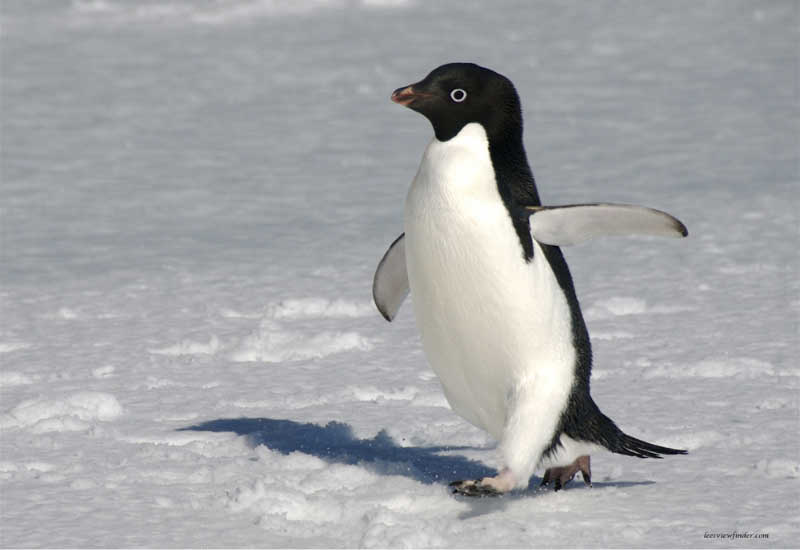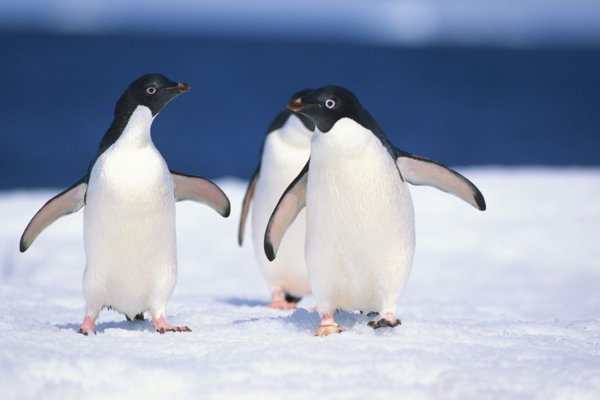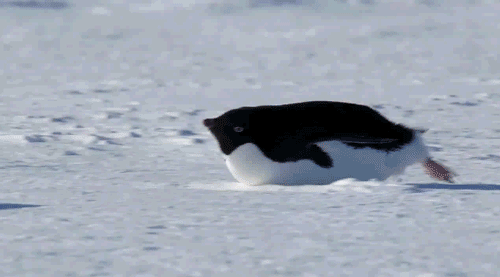Today is World Penguin Day, an international celebration dedicated to the flightless birds that are almost synonymous with the stretching white plains of the Antarctic.
The date of World Penguin Day – the 25th of April – is being suggested by some sources online as coinciding with the day some colonies of penguin species Pygoscelis adeliae, more commonly known as the Adélie Penguin, starts their winter migration.
However, research shows that it is not a calendar date that determines when the penguins take the road, but in fact the amount of light available and the extension of the Antarctic ice sheets: as the days shorten during the Antarctic winter that starts around March, the penguins begin their migration in a bid to continue to feed.

The Adélie penguin: some would say, the quintessential penguin species
The Adélie penguin can be found all along the Antarctic coast, and, along with emperor penguins (Aptenodytes forsteri), no other penguins can be found as southerly located as these tough little birds.
Researchers have found that the Adélie penguin located on Ross Island are some of the biggest travellers of the species, with some colonies migrating up to 17,000km throughout winter in search of food.
The Antarctic summer occurs between November and February. At this time of year, colonies of the penguins are located inland, and as it is also mating season, breeding pairs can be found incubating their eggs on ice-free land during the warmest time of the year.
Starting from March however winter slowly takes over, and days can disappear into complete darkness, making feeding increasingly difficult.
With 98% of their diet comprised of krill, Adélie penguins need access to the sea to continue to feed, but during the winter months as the sea freezes and days become shorter and shorter, foraging and hunting becomes near impossible. The adult penguins with their young begin their migration north in search of krill feeding sites and chasing the last of the sun, trying to escape the perpetual darkness of the south.

The penguins begin their journey when the days become too dark to hunt and the ice sheets become too thick, obstructing their access to the sea (image credit: bioexpedition.com)
A popular species to track because of their migratory patterns, researchers use geolocation sensor tags attached to the Adélie penguins to follow them as they leave their breeding grounds. Researchers found that the colonies located in the South of Ross Island migrate on average around 13,000 km across the year, with some traveling up to 17,600 km as they follow the ice sheet as it extends into the sea. As the ice recedes once more, the penguins follow it back to the mainland, returning to the shoreline.
Not all that set off on their journey will return; failing to survive this migration is the biggest cause of death in adult penguins, with some species seeing nearly one in four penguins peril on their journey during the winter months.
However, as climate change effects accelerate, it may be time for a change of plan; warmer conditions will mean less sea ice, shrinking the area in which the Adélie penguins can forage and feed during the twilight hours of winter.

Often the penguins will toboggan across the snow; a quicker way to move than just waddling
Researchers are uncertain if they will be able to adapt in time to changing sea ice conditions; although records show they adapted their migratory patterns around 20,000 years ago during the last glacial maximum when the ice sheets were at their widest, it’s not certain they would be able to do so again if the environment changes too quickly this time around for them to keep up, especially if it means less sea ice for the penguins to hunt in, not more.
However, next time you complain about waiting in the queue for a sandwich during lunch, think about the Adélie penguin and its perilous trek to get krill; suddenly a ten minute wait in Pret may not seem so bad at all.

